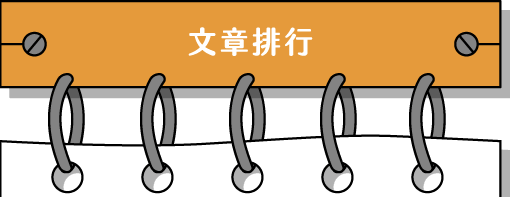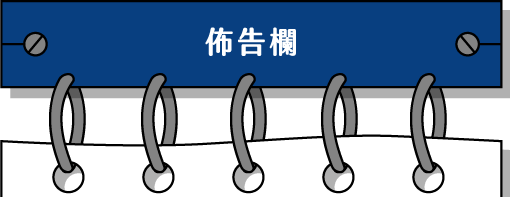
Short interest is an integral metric in stock trading, acting as a crucial indicator for potential short covering situations. It represents the total shares of a specific stock that have been sold short but remain uncovered or unsettled. This figure is a telling gauge of the market’s attitude towards a stock, signaling whether investors are bearish and expect the stock price to decrease. Short covering is a significant tactic in the intricate realm of stock market strategies. This approach entails buying back securities, typically stocks, that were initially borrowed and sold under the assumption that their price would fall, a method referred to as short selling.
What is Short Covering?
Short selling (or shorting) in the market simply refers to taking a sell position in the market. However, if your view on the markets is bearish (or range-bound in case of options), traders can initiate a sell position first and then buy. In the next week or so, the price of stock XYZ falls to £15, and you buy them back. This is the short covering part of the process, and you now have the shares back in your position to return them to the lender. BBBY climbed from around $16 to over $27, and short sellers were forced to begin short covering.
In the stock market’s ever-changing environment, short covering can occasionally trigger a dramatic event known as a short squeeze. This situation usually arises when numerous short sellers simultaneously try to cover their positions, often in reaction to an unforeseen positive update or a shift in market sentiment. The original stock brokers that issued the securities may also choose to issue margin calls, in which all borrowed shares must be returned immediately. This raises the number of investors seeking to cover their short positions, perhaps leading to greater gains in the company’s share price.
What Is the Difference Between a Short Squeeze and Short Covering?
A stock rising in price can also prompt traders to cover their short positions in order to limit their losses. A short squeeze primarily results from short sellers’ urgency to minimize their losses. Their collective action of buying back shares to cover their short positions leads to an abrupt demand spike, propelling the stock price upward. This escalation can be swift and pronounced, particularly in stocks with considerable short interest in comparison to their trading volume. As the stock price rises, more short sellers get compelled to buy, fueling a cyclical pattern of escalating purchases.

Discover Wealth Management Solutions Near You
It reflects a reaction to shifts in market sentiment and unexpected events that challenge a negative forecast. This situation can result in a rapid surge in stock prices, forcing short sellers to cover their positions at even higher prices, exacerbating potential losses. The short squeeze was exacerbated by several funds shorting more shares than the available float of shares in the market, making it difficult to cover all their short positions. Short covering is necessary in order to close an open short position.
- Also known as Purchasing To Cover, is when a buyer invests stock in closing out a sell order that has already been opened.
- When an investor sells a share that they do not own, this is known as selling the stock short.
- IG accepts no responsibility for any use that may be made of these comments and for any consequences that result.
- This collective action increases buying pressure, potentially elevating the stock price.
In this process, a trader borrows stocks, sells them right away, and intends to repurchase them later at a reduced price. The goal is to return the borrowed stocks while retaining the difference in price as profit. Short covering impacts market sentiment, stock prices, and portfolio management.
These surprises can catch short sellers off-guard, forcing them to cover at higher prices and incur losses. Conversely, taking a long position is an investment approach based on the anticipation of a stock’s price appreciation over time. Traders buy and hold stocks, aiming to profit from price growth and dividends.
Now since the trader has already taken a short position, in order to square it off he/she has to convert swedish krona to japanese yen take a long position. The position will be in profit when the price at the time of square off is lower than the initiation price of the short position.. Conversely, short covering involves buying back a security to close out an open short position. When you begin buying back those shares you borrowed, you’re short covering. Monitoring short covering activity and staying informed about market conditions are essential for successful wealth management. Analyzing short squeeze potential involves monitoring short interest, stock borrow fees, and market dynamics.
For starters, short interest refers to the percentage of a stock that is held by short-sellers. xtb review is xtb a scam or legit forex broker A higher number means that a company’s stock is under intense pressure from short-sellers. The chart below shows that about 20% of all of GameStop shares are held by short-sellers.
And to catch the hottest news that can drive big market moves and short squeezes, get STT with the game-changing Breaking News Chat add-on for $17. Fundamental analysis, including company earnings, industry outlook, and macroeconomic factors, can also provide insights into the optimal timing for short covering. It allows investors to actively manage their portfolios, taking advantage of market movements and adjusting their positions based on changing market conditions. Short covering plays a significant role in wealth management as it affects market dynamics and investor behavior. Open interest refers to the total number of outstanding contracts that still need to be settled. It’s used as an indicator to determine market sentiments and the strength behind price trends.
You’d keep the difference between the price at which you sold the borrowed shares and the price for which you bought them back as profit. But, if the shares had increased in value, the difference between the price at which you sold the shares and the higher price at which you bought them back would be your loss. Even if you’re not planning on short selling, short covering is an important concept to keep in mind in today’s markets. How to Open a Brokerage Account Short sellers sell borrowed shares into the market in hopes of buying those same shares back for a cheaper price.
IG accepts no responsibility for any use that may be made of these comments and for any consequences that result. No representation or warranty is given as to the accuracy or completeness of this information. Consequently any person acting on it does so entirely at their own risk. Any research provided does not have regard to the specific investment objectives, financial situation and needs of any specific person who may receive it. It has not been prepared in accordance with legal requirements designed to promote the independence of investment research and as such is considered to be a marketing communication. Although we are not specifically constrained from dealing ahead of our recommendations we do not seek to take advantage of them before they are provided to our clients.
Monitoring regulatory changes and policy developments is crucial for investors to understand the potential implications for short covering and adjust their investment strategies accordingly. A short squeeze happens when many traders have an unfavorable view of a company and choose to sell its shares short. As just one example, many traders held a negative outlook on the brick-and-mortar video game retailer GameStop (GME 6.83%) because the company was losing sales to digital distribution channels.
StocksToTrade in no way warrants the solvency, financial condition, or investment advisability of any of the securities mentioned in communications or websites. In addition, StocksToTrade accepts no liability whatsoever for any direct or consequential loss arising from any use of this information. This information is not intended to be used as the sole basis of any investment decision, should it be construed as advice designed to meet the investment needs of any particular investor. Past performance is not necessarily indicative of future returns. This is for informational purposes only as StocksToTrade is not registered as a securities broker-dealer or an investment adviser. And if you think you’re ready to take your trading game to the next level, be sure to check out the SteadyTrade Team.
The increase in the security price causes short sellers to buy it back to close out their short positions and book their losses. For traders and investors, comprehending short interest nuances is key to strategizing around short covering. It identifies stocks prone to short squeezes or at risk of price volatility due to widespread short covering. It also helps in determining optimal market entry and exit times, equipping traders to maneuver the market with informed agility. Furthermore, short covering can also be influenced by short squeeze risks. Short squeezes occur when short sellers face difficulties in covering their positions due to limited availability of shares or high borrowing costs.









